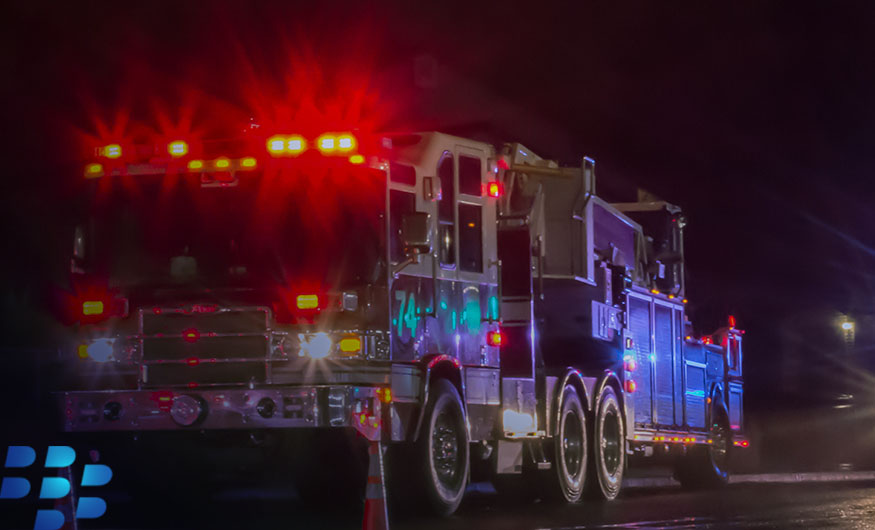Critical Event Management in 2024: Keeping Communities Safe
Local governments play a vital role in keeping communities safe and functioning on a daily basis. But when critical events occur — like natural disasters, cyberattacks, or civil unrest — these authorities can face unique challenges in coordinating an effective emergency response. Common obstacles include:
All of these things can seriously undermine critical event management (CEM) efforts and put lives at risk. Fortunately, solutions exist to help first responders and local governments overcome these challenges, and as a result, better protect employees and citizens.
How Communication Breakdowns Hamper Response Efforts
During critical events, traditional communication channels like phone lines, email, and radio systems, can become overloaded or compromised. This leaves response teams without a reliable way to share real-time updates and coordinate effective action. Manual notification processes are also prone to delays and human error. For many organizations, inefficiencies are slowing every part of their response. And according to the Business Continuity Institute (BCI), 75% of organizations are unable to activate their plans within the “golden five minutes.” Every minute of delay increases the risks to public safety.
Local IT infrastructures may also lack the redundancy needed to maintain operations if primary systems fail. Without independent, fail-safe communication abilities, governments struggle to maintain command and control during emergencies. This lack of reliable connectivity impedes information-sharing between response teams, and critical situational awareness.
In the course of a cyber breach, organizations need to have the ability to securely collect, validate, and share information across channels to activate a coordinated, multi-departmental response immediately. When internal communication platforms are compromised, having secure messaging that is independent of IT networks is imperative.
Limited Situational Awareness Hampers Decision-Making
During fast-moving critical events, leaders need up-to-the-second information to make informed decisions. However, traditional communication methods don't provide the bidirectional feedback loops required to track incident progress, resource status, and more.
Limited situational awareness handicaps response coordination and hinders efforts to resolve incidents quickly. It also increases risks if leaders don't have complete context for the decisions they're making. Furthermore, first responders can find themselves in harm’s way if they don’t have direct access to pertinent information. Real-time visibility into how messages are received and understood is critical for public safety success.
Compliance Requirements Are Complex to Meet
Local governments must comply with regulations like the Clery Act, which mandates providing timely warnings of campus threats. These local authorities are also held accountable for maintaining open records and transparency standards. However, traditional communication tools typically don't provide the audit trails, reporting, and controls needed to demonstrate regulatory compliance.
Manual or informal processes are also risky, as they offer limited transparency, and record-keeping can range from sporadic to nonexistent. This opens the door for non-compliance accusations and even litigation, which can seriously damage reputations and erode public trust — especially in the aftermath of a critical event. Advanced solutions are needed to satisfy these complex regulatory demands.
BlackBerry AtHoc Solves Crisis Pain Points
The BlackBerry® AtHoc® CEM solution is purpose-built to overcome communication challenges during critical events. According to Aberdeen Research, “With critical event management in place, organizations are 70% more likely to analyze and understand the impact of critical events in minutes or less, 3x more likely to resolve critical events in less than a day, and 2x more likely to see no or limited impact on revenue from critical events.”
Some AtHoc key capabilities include:
- Independent, secure communication: AtHoc's channels remain available to maintain response coordination, even if primary systems fail. Two-way messaging ensures acknowledgment and understanding.
- Centralized command center: One dashboard provides shared visibility and a “single source of truth” for leadership and response teams. This speeds response times within the critical “golden five-minute” window.
- Regulatory compliance: Comprehensive audit trails, reports, and controls simplify and satisfy strict transparency and record-keeping demands.
- Rapid activation: AtHoc cuts activation times down to less than five minutes through automated templates, aided by AI-powered cyberthreat detection.
- Multi-channel alerting: Agencies can reach all stakeholders simultaneously through text, phone, email, social media, and more. Geo-targeting enables the right people to receive critical updates based on their location.
- Inter-agency collaboration: Features like AtHoc® Connect empower information-sharing between governments, emergency services, and other partners for coordinated responses.
- Scalability: Whether serving a small town or large metropolis, AtHoc can scale to meet the needs of jurisdictions of any size, through flexible licensing and hosting options.
Keeping Local Communities Safe
With BlackBerry AtHoc, local governments gain the tools needed to effectively manage any public safety event. Rapid activation times and independent communication pathways ensure emergency plans can be enacted within crucial minutes.
Real-time coordination and information-sharing between agencies further streamline responses. And multi-channel alerting gets critical updates to employees, residents, and partners — wherever they are located, and however they are connected.
Most importantly, BlackBerry AtHoc provides the accountability, visibility, and communication integrity required to safeguard communities every step of the way. With security expertise from BlackBerry, agencies can respond to incidents with confidence, to protect physical and digital assets and — most importantly — keep personnel and citizens safe.

